When growing your team and aiming to become more productive and successful, it’s important to consider the employee lifecycle. How does an employee at your business start, progress and ultimately leave? Their experience while working at your company defines how successful they will be, and helps to build your culture and values.
If you want to create an amazing workplace, start by taking a look at this guide. We’ll explain how to enhance each stage of the employee lifecycle in detail, with actionable tips on to improve engagement, productivity and employee retention.

What is the employee lifecycle model?
The employee lifecycle is an outline of the stages that an employee passes through during their time with an employer. It starts from the instant a new hire discovers your company and officially ends when that team member leaves.
Although the model can differ slightly depending on your company, the six commonly stages are defined as:
- Attraction
- Recruitment
- Onboarding
- Development
- Retention
- Exit
Creating a positive employee experience is important during every part of the lifecycle model. However, it’s important to tailor your approach to each stage, as their intentions vary greatly.
How does an employee lifecycle affect employer brand?
Effective employee life cycle management is the key way to develop a great employer brand. Company success is built on engaged, informed and productive employees.
Creating a fantastic company culture is best achieved when you start at the beginning of the employee journey. Build your company values into each stage of the employee lifecycle, starting with recruitment.
If you foster this positive company culture throughout the entire employee lifecycle, you’ll improve your overall team morale. At the end of the day, you want to boost your profits, which is only possible with a happy workforce.
Why is the employee lifecycle important?
The employee lifecycle should be a major focus in the HR strategy for each organisation. Delivering an outstanding employee experience at every stage of their career journey can have a huge impact on business outcomes.
Businesses with high levels of employee turnover can become unfocused, with no clear strategy. Recruitment is expensive, so retaining high-performing employees brings unity and focus to a business plan.
With a fully-supported employee lifecycle, HR professionals can focus on developing current employees and nurturing their potential for growth. They can minimise worries of constantly replacing team members, and will find the recruitment process for new employees easier.
If you enhance your employee lifecycle model, paying close attention to improving each stage, you’ll create a more positive company culture that delivers results.
Why should you implement an employee lifecycle strategy?
The employee experience is becoming more collaborative, even though teams are more displaced than before. With hybrid and remote working at an all-time high, employee engagement strategies need to be updated to stay relevant.
Focusing engagement strategies around each stage of the employee lifecycle is a great way to ensure you provide the most well-rounded company culture possible.
What are the benefits of implementing an employee life cycle model?
To foster a high-performing, collaborative and successful culture, it’s vital that your employees are engaged with company values. Focusing on your employee lifecycle strategy allows them to perform at their best.
It also improves your overall reputation as a worthy employer. If you can prove that you have a fantastic team of engaged, high-performing individuals, you are more likely to attract new talent of a similar calibre.
What are the six stages of the employee life cycle?
Although it can be broken down into hundreds of different stages, it’s easiest to categorise the employee lifecycle into six overarching stages. They are:
Attraction
The first stage of the employee lifecycle begins even before you advertise an open role. The attraction phase is an ongoing process, which you need to focus on year-round.
Employees are looking for an employer that will offer not just a wage; but a supportive, inclusive environment. This is commonly referred to as your employer brand.
Even if you offer the best employee experience possible, potential new hires won’t know unless you promote it. Job adverts that contain phrases like “dress down Friday” or “free fruit and drinks” don’t cut the mustard anymore.
Your company brand should be apparent in everything that you, your employees or your customers say. If you’ve got a great culture, it’ll shine through in reviews, social posts and website content.
If you’re stuck on how to start enhancing your employer reputation, take a look at the guidelines for action below:
- Consider your benefits package
- Promote your working culture online
- Listen to your current employees
- Be open to change
- Shout about your successes
Recruitment
Hiring someone new is a big task, and you want to make sure that you find the right person for the job. But with a poor employee lifecycle, you may struggle to hire as effectively as possible.
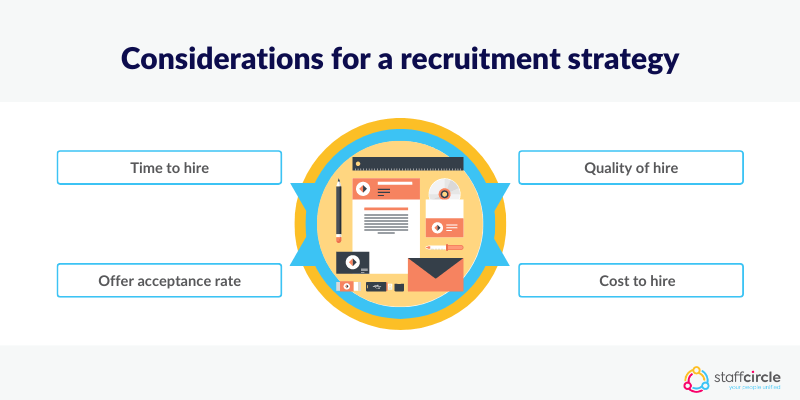
Consider the following points when planning your recruitment stage of the employee lifecycle.
Time to hire
As a candidate, there’s nothing more reassuring than a potential new employer who is clear about their intentions. If you’re applying for multiple jobs, an employer who leaves you hanging will most likely lose out to one who shows that they are keen to have you on board.
Consider your current recruitment process. What’s the average length of time between a new hire applying for an open position, and accepting the role if successful?
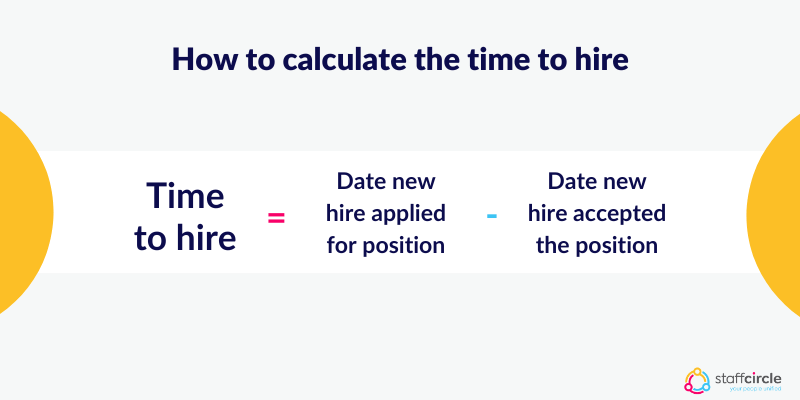
Improving this timeframe is a great way to improve your employee lifecycle. Identify any bottlenecks in the process and consider if any changes could be made. This could include responding to CV’s faster, arranging interviews as soon as possible and ensuring more regular and positive follow-up to each is carried out.
If you’re able to demonstrate your desire to hire as early as possible, the best candidates will be more likely to join your team.
Offer acceptance rate
Calculating your offer acceptance rate is a quick way to spot flaws in the recruitment stage of your employee lifecycle.
Simply divide the number of offers you’ve had accepted by the number of offers initiated. Take a look at the results year-on-year, or if you hire large amounts of new employees, split the results into more appropriate timeframes.
Ideally, your offer acceptance rate would be 100%. However, it’s unlikely that you’ll have a perfect score. Use the results to identify why you lost these candidates.
There will always be an element of personal choice as to why a candidate doesn’t accept a role. They may have been using the interview as leverage for a raise in their current position, they didn’t think they’d be able to perform the role well or just didn’t feel as though the role was enough of a challenge.
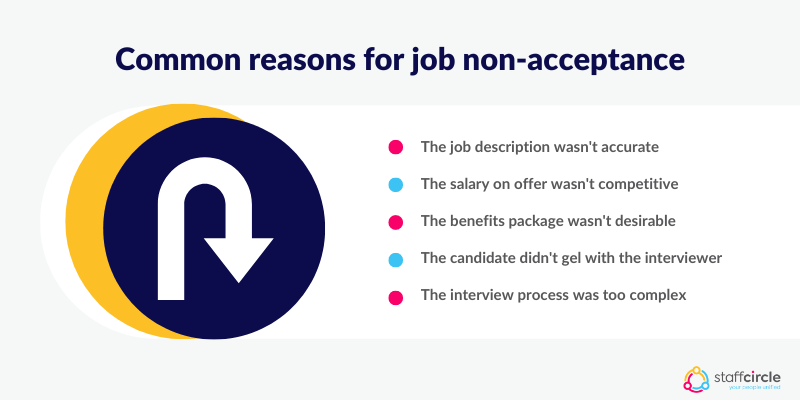
However, you may find some interesting and easily curable reasons for why a job offer wasn’t accepted. Common actionable responses to a non-acceptance of a job offer are:
- The job description didn’t accurately describe the role
- The salary on offer wasn’t competitive
- The benefits package wasn’t desirable
- The candidate didn’t gel well with the interviewer
- The interview process was too complex
If you notice any trends in the offer acceptance rate results, take steps to improve your employee attraction stage. That could mean improving your job description outlines, reviewing the level of seniority of a role or restructuring your interview process.
Making these changes will directly improve not only your employee acceptance rate, but your employee lifecycle as a whole.
Quality of hire
When growing a successful company, getting new employees on board quickly and cost-effectively is often a priority. However, this importance on speed can often overshadow the actual quality of a hire.
If your human resources team is targeted around a number of hires or the length of time a position is open, you could be setting yourself up for failure.
Instead, consider targeting your recruitment around the quality of each hire. By placing a higher priority on the skill set and suitability of each candidate, you will save your team from re-recruiting the same role if the new hire doesn’t work out.
Cost to hire
There are numerous factors that can impact the budget for recruiting each new employee. These include, but are not limited to:
- Salaries of internal recruiters
- External recruiter fees
- Job site listings
- Candidate assessment solutions
- Interviewer time
However, the cost to hire can vary greatly depending on the role. A blanket cost-to-hire for the whole company may not accurately reflect the true budget needed to hire for a certain team. To get a true overview of the budget required for your employee recruitment stage, break down the cost to hire by job title, department or seniority level.
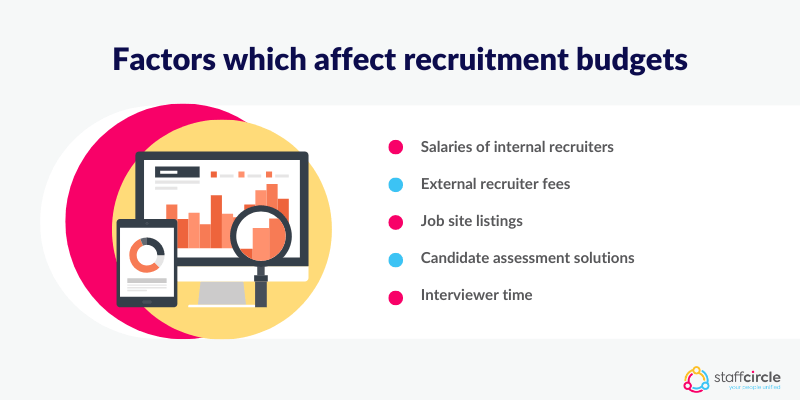
Once you analyse the results, you may find that you need to allocate more of your budget to a certain role type. If you find it easy to attract new employees to one role just via job site listings, use that external recruiter budget on a more complex job opening.
A great way to leverage outstanding company culture in the employee attraction stage is to use recommendations. Consider using some of your budget as a reward for successful staff referrals. After all, you’re more likely to receive great recommendations from happy, engaged employees.
Onboarding
When you hire a new employee, it’s vital to get the onboarding process right. Implementing a successful onboarding system allows new hires to get off to the best start, fully engaged with your culture, their role and your company policies.
It’s your first chance during the employee lifecycle to truly shape the development of a new team member.
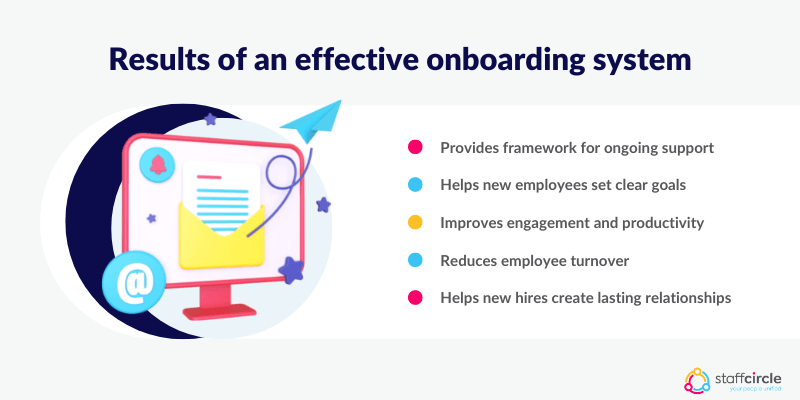
If you get it right, they’ll be able to make valuable contributions to your business growth as soon as possible. Get it wrong, and they may become unhappy, unproductive or even look to leave.
Ramp time
Also known as ramp-up time, this is a term commonly used in sales-based roles, but can be applied to the performance of any new employee.
It refers to the period between an employee starting work at your company and when they start to become productive. In an ideal world, your new hires would become productive from day one, but there’s a learning curve to every new role.
In this stage of the employee lifecycle, it’s key to understand exactly what your new hire needs to reach a good level of productivity.
If you only provide a basic overview and training programme, you may find issues with the accuracy or volume of their work. This can affect other employees on the team, who need to step in to pick up any slack. When you start a new employee’s journey with a comprehensive training schedule, they will be able to start their new role on the best foot.
Speak with each new hire to determine what will work for them. Set achievable KPI objectives early, provide background and contextual training, and celebrate their early successes.
New hire engagement
During your employee onboarding stage, make sure your new hire feels welcomed and supported. If you’ve successfully carried out an enhanced hiring process, you should be confident that your employee aligns with your company values.
Now is the time to reassure them that they’ve made a great decision to join you.
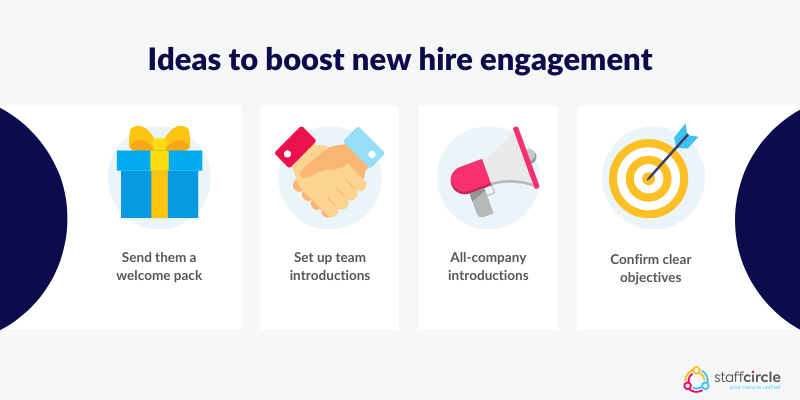
Some great ideas to boost new hire engagement are:
- Sending them a welcome pack
- Setting up introductions to different teams
- Introducing new hires during all company meetings
- Confirming clear objectives and development goals
Training effectiveness
Implementing a thorough training process is a brilliant way to enhance the employee lifecycle. However, you must carry out a detailed analysis to make sure that your efforts are working.
This can be done manually by managers, but the easiest way to understand employee development and identify issues early is by using performance management software.
Setting each new hire objectives that link back to your company values allows you to assess how effective your training is. A range of KPIs that tie into departmental or company goals, aligned with your business culture, improve the employee’s experience and help monitor their progress.
Make sure to regularly check in to discuss their achievements and desires for their career path. If you keep a close eye on how their aims tie into their performance, you can decide whether you need to change the training process for any future employees.
Development
Once you’ve recruited and onboarded an employee, it may seem as though the hard work is done. After all, you’ve found the perfect person for the job, so they should be happy in their role.
However, ambitious employees don’t want to remain at their current level. They want to continue learning, developing their skill set and progressing in their career. This makes it vital for you to enable their growth, through a structured plan, to enhance the employee development stage of the lifecycle.
Productivity
Improving employee productivity is a huge driver behind business success. The only way to improve productivity is through regular training and development. Improving their on-the-job skills allows them to act autonomously, working to the best of their abilities with minimal input.
Allow your team to be involved in their own development. Encourage external learning to enhance their professional development, whether this is through company delivered courses or by their own initiated event attendance.
Regular feedback
As mentioned above, employees in 2022 crave input and feedback more than ever. If you’re only carrying out a single annual appraisal, consider moving to a different employee feedback structure to improve employee engagement during your life cycle.
A 360-degree feedback strategy is a more thorough and inclusive way to help engage an employee. It involves collecting feedback and reviews from employees, colleagues, managers and even customer satisfaction reviews to generate a more rounded view of performance.
This doesn’t just apply to individual performance, but to company delivery against values as a whole. It removes bias, with honest feedback gathered through employee pulse surveys and other direct responses.
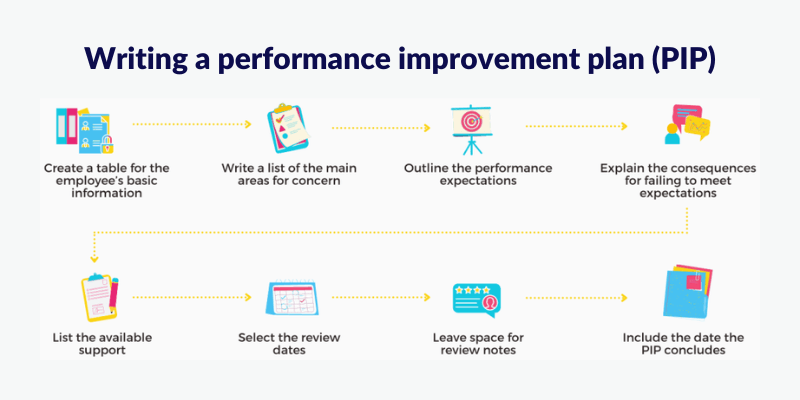
It’s important to not only provide feedback when an employee is performing well. Having a clearly defined performance improvement plan (PIP) in place is key when an employee isn’t performing well. Discussing their issues, understanding how you can help and measuring their improvements is important feedback that your worker needs to get back on track.
Promotion rates
If you are successful in this lifecycle stage and focus on developing your existing employees, you’ll more than likely see an increase in your promotion rates. This signals that you are hiring the right people, who have an aptitude for your business and values.
There’s no better way to reward development than with a promotion or pay rise. Having a defined promotion and career strategy in place, that every employee engages with, improves your productivity and performance.
Retention
It’s a given; once you’ve hired a brilliant employee, you want to retain them to keep the good work going. However, keeping hold of top talent can be a difficult task for a human resources department.
Especially in today’s job market, workers have more options than ever. With flexible and remote working more common, top talent can be pickier in the roles they go for.
Ongoing professional development is a key way to keep your existing team engaged. However, you need to work on culture to ensure that you retain them to use these skills to boost your company’s success.
Employee engagement
Your employees can only be engaged in your company mission and values if you’re open and honest about what you’re trying to achieve. Building trust in the workplace is the key to developing employee engagement and creating happy team members who are working towards your core values.
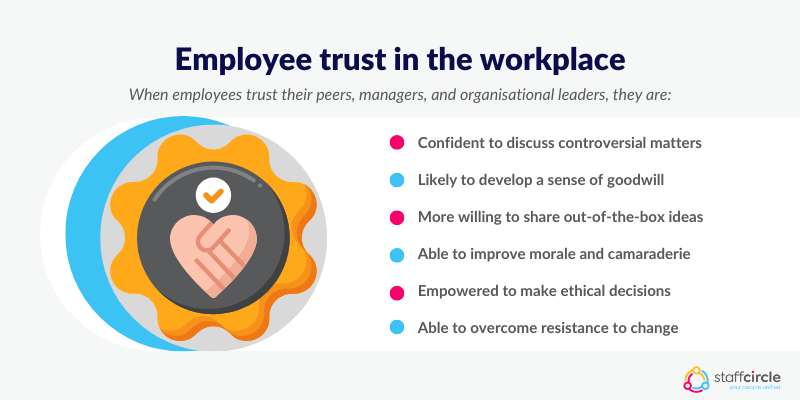
Focusing on employee engagement as part of your life cycle project will enhance every stage. Employee health and well-being are important, so making them a focus will steer you in the right direction.
If you want to foster good relationships between different teams, consider fun office games or implementing a buddy system to enhance communication.
Attrition rate
Pay close attention to your attrition rate when evaluating your employee lifecycle. There are five types of attrition rate, and it’s important to make sure that you have a strategy in place to reduce the effects of each one.
A high attrition rate affects your business brand and team morale across the business. A high attrition rate can leave your existing employees overworked, and low in morale, causing company cost due to negative performance.
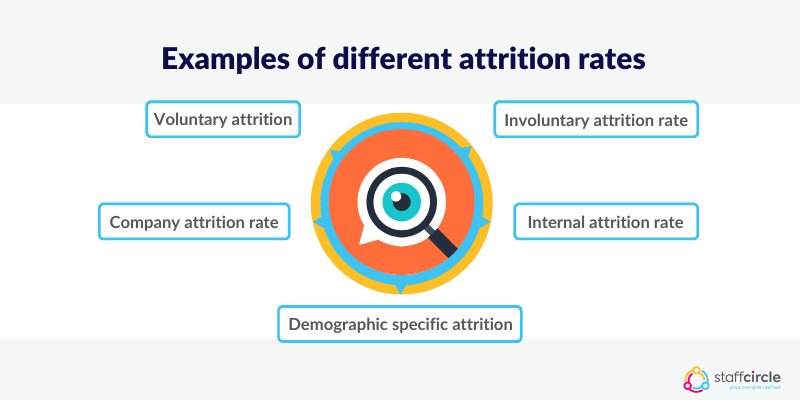
Exit
If you create a brilliant working environment using the steps above, employees will be more likely to stay. However, it’s inevitable that you will lose some colleagues over the years.
If you’ve sufficiently enhanced the early stages of the employee lifecycle, you will hopefully minimise the need to terminate an employee’s contract due to poor performance. No matter your efforts, termination or redundancy can sometimes be unavoidable.
However, there’s no way to account for changing life circumstances. Employees may leave voluntarily for personal reasons; following a new career path, relocating, retiring or just taking a working break.
Online employer brand
All former employees still contribute to the employee lifecycle and values, so it’s important that you continue creating an irresistible culture at all times.
The opinions of these employees often shape your online employer reputation, through websites such as Glassdoor or LinkedIn. While the odd negative review from a disgruntled former employee can be expected, a large number of reviews from unhappy former employees will negatively impact your initial attraction efforts.
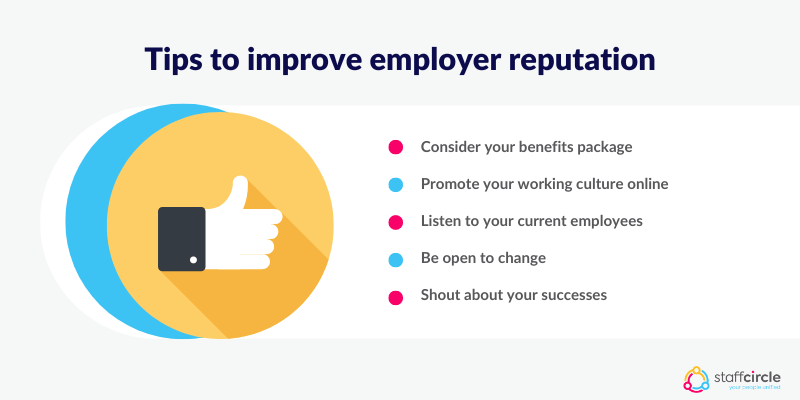
By making strides to ensure that employees remain with your company, you can minimise the number who leave under negative circumstances. If an employee does choose to leave voluntarily, ask them to provide an online review or feedback to give potential candidates a well-rounded view of an employee’s journey with your company.
Exit process
Make the exit process as smooth as possible. If you need to make an employee redundant or terminate their contract, make sure that you are as open and honest as possible throughout the process.
Those who have worked through a PIP may already expect to be terminated. However, if you’re faced with a number of underperforming employees, it could be time to reassess your targets and whether they are achievable.
Take a look at how effective your current exit interview questions are. Can you foster a great sense of company culture, even as your employee leaves?
Offer positive, honest feedback that will enable them to progress in their career. Even as you wish them well, giving them some actionable feedback will improve their view of the company for future recommendations.
In summary
Managing your employee lifecycle is key to developing a great employer brand and creating a positive employee experience. It’s important to tailor your approach to each stage of the model, as employees have different intentions at each point.
Meta Desc:






